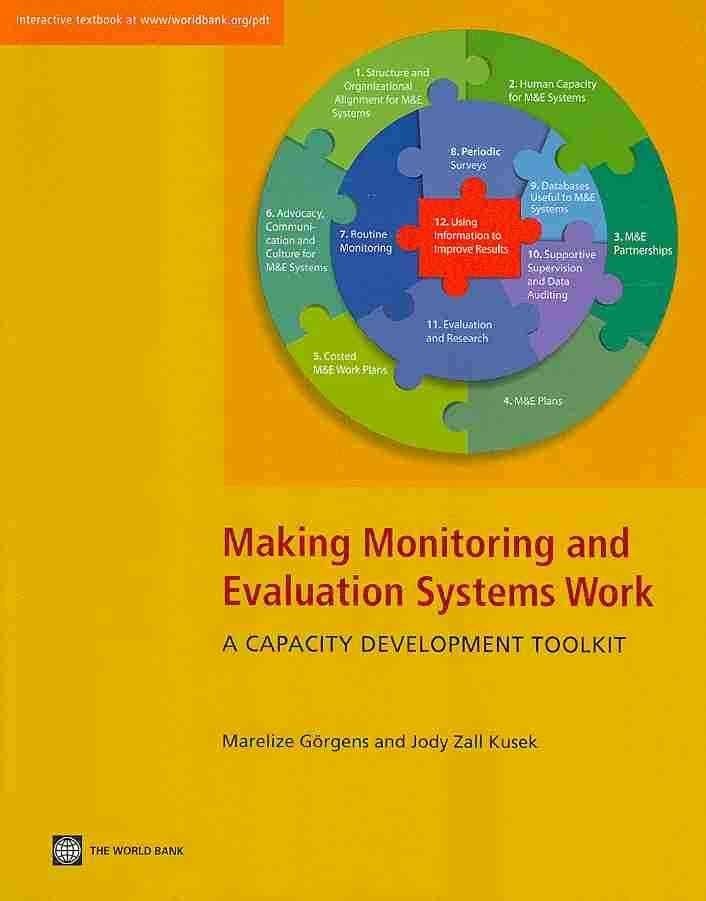Written for those who said to the authors (and for others in the same situation): ?We know we need M and E, but we don’t know how to set up an M and E system, or how to make ours work well and provide the information we need.? This detailed, practical manual explains the skills and steps for making a monitoring and evaluation (M and E) system that functions well. The goal is an M and E system – people, processes and partnerships – that collects, verifies and analyzes good quality information that is useful and used by decision makers, managers, implementers, funders, and other stakeholders. The manual begins by introducing the concept of results-based management, and the internationally accepted ?12 components of functional M and E Systems? framework. It describes the purpose and functions of each component, and builds skills by taking users through the steps for setting up, or improving what already exists. (The 12 modules ? one for each component ? are listed overleaf.) Each module has clear learning objectives, detailed systematic explanations and useful examples, and exercises for learners to work through that apply what is being taught (model answers are available on line). Use: It can be used as a reference manual, a training text, or for self-study. It is likely to be especially useful for trainers and trainees trying to meet the need for skilled professionals, capacity and technical advice in building sustainable M and E systems. Using the 12 components of any working M and E system as a benchmark, users can easily assess their own system for sustainability, identify where improvements are needed, and follow the detailed, systematic steps and ?how to? guidance.Potential Users: The broad audience for this manual includes all those responsible for M and E, across all sectors. The primary audience is people who set up, operate, or oversee M and E functions, trying to ensure that data are collected, compiled, and provided in a useful way to decision maker …












